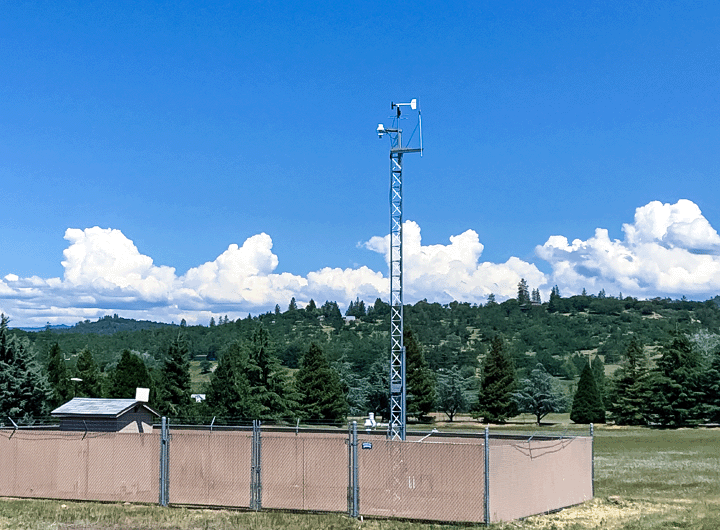In the News
EPA Responds to my Last Blog Post and Finalizes RMP Rule

Clearly EPA is reading my blog, because only nine days after I posted a summary of lingering questions about proposed PSM/RMP changes (link), EPA has responded with a final version of the updated rule (link) and a summary of frequently asked questions (link).
For those of you who don’t want to wade through the 372 pages summarizing the rule or even the 12 pages of frequently asked questions, here’s the important point: it’s all going to be ok. The most problematic aspects of the proposed rule appear to have been dropped from the final rule, and the remaining changes should be manageable for the vast majority of facilities. You will need to take a little time to get familiar with the new rule, but the good news is that you’ve got several years to implement most of the new requirements. And if that still feels overwhelming, I’m sure there will be plenty of people like me offering to help.
Here’s a relatively brief summary of the important changes to the RMP requirements:
Updated Emergency Planning and Coordination Requirements
Coordination: Facilities will be required to coordinate at least annually with local emergency planning and response organizations to ensure local responders are aware of the risks associated with the covered process and the ability of site personnel to respond to an emergency. The facility must keep a record that includes the date of the coordination, the nature of the coordination activities, the names of people involved, and their contact information. Facilities that engage in emergency response, i.e., “responding facilities”, must consult with local emergency planning and response organizations to establish appropriate schedules for emergency response exercises. Facilities must request a meeting with local emergency planning and response organizations, but EPA recognizes that some local agencies may not be willing or able to attend a meeting.
Information sharing: As part of the annual coordination, the facility must provide a copy of the emergency plan(s), updated emergency contact information and any other information that local emergency planning and response organizations identify as relevant to local emergency response planning.
Annual notification exercises: Facilities will be required to conduct and document annual “notification exercises” to test the emergency response notification procedures.
Emergency response exercises: “Responding facilities” will be required to periodically conduct and document “table-top” exercises and “field exercises.” The facility must determine an appropriate frequency for emergency response exercises after consulting with local emergency response officials, but the table-top exercises must be completed at least every three years and the field exercises must be completed at least every ten years. The rule does allow some alternative means of meeting the exercise requirements, including the option to satisfy the requirement with an actual emergency response provided the response actions included the appropriate procedures.
Emergency response plan review and update: The final rule requires facilities to review and update the emergency response plan as appropriate based on changes at the source or new information obtained from coordination activities, emergency response exercises, incident investigations, or other available information, and ensure that employees are informed of the changes.
Minor update to emergency release notification requirements: The final rule requires facilities to have procedures for informing the public as well as local, state, and Federal response agencies in case of an accidental release. These changes are intended to make the RMP rules consistent with existing EPCRA and CERCLA release notification requirements, although the list of regulated substances and notification triggers are not identical.
Availability of Information to the Public
Ongoing notification: The final rule requires facilities to provide ongoing notification on a company website, social media platforms, or through other publicly accessible means that certain information is available upon request. Facilities must provide requested information within 45 days after receiving the request. Please refer to 40 CFR 68.210 in the final rule to see the specific list of information covered by this requirement.
Public meetings following a reportable accident: Facilities must hold a public meeting within 90 days following a reportable accident, i.e., an event meeting the 5-year accident criteria in 40 CFR 68.42.
Root Cause Analysis Requirements
The final rule requires additional reporting elements to investigations that are required after any incident that resulted in or could reasonably have resulted in a catastrophic release. The facility must identify the fundamental reason (“root cause analysis”) for the incident, and prepare a report within 12 months of the incident that includes consequences of the accident and any emergency response actions taken.
Safer Technology and Alternatives Analysis for Some Industries
Three industries (paper manufacturing; coal and petroleum products manufacturing; and chemical manufacturing) are required to thoroughly evaluate safer technology and alternatives when conducting their Process Hazard Analysis. However, implementation of identified alternatives is not mandatory.
New Requirements for Third-Party Audits in Some Situations
The new rule requires facilities to conduct a “third-party” compliance audit within 12 months following a reportable accident or if an implementing agency determines that a third-party audit is necessary. In cases when a third-party audit is required, the audit team is allowed to include members that fail to meet the “independent” criteria as long as the team is led by an independent third-party auditor. People who (or firms that) have provided research, development, design, construction services, or consulting for the facility within the last two years are not considered independent. Third-party auditors cannot provide other business or consulting services to the facility, including advice or assistance to implement the findings or recommendations in an audit report, for a period of at least two years following submission of the final audit report.
Third-party audit reports must be provided to the company’s Board of Directors or equivalent management or other comparable committee or individual, if applicable. The company will have 90 days to assign a response to each of the third-party audit report findings. Please note that 90 days is the deadline for assigning audit recommendations, but facilities may justifiably require more than 90 days to complete follow-up actions.
Minor Housekeeping Edits
The final rule includes several minor housekeeping edits and clarifications, most of which won’t be noticeable to vast majority of facilities. One interesting note is that the final rule clarifies that operator training requirements apply to supervisors to the extent that supervisors have “process operational responsibilities.”
What Wasn’t Included in the Final Rule?
If you’re feeling overwhelmed by the new requirements, you should consider the potential changes that EPA declined to adopt. For example:
- There are no changes to the list of regulated substances. Ammonium nitrate, for example, is not covered by the final RMP rule. However, the preamble to the final rule indicates that EPA may address this in the future.
- A very big difference between the proposed rule and the final rule is that EPA dropped the requirement for facilities to become “responding facilities” if the outcome of the coordination demonstrated that local emergency agencies were not capable of responding or upon request of the local emergency response authorities. This would have been a big deal because it would have forced some companies spend the time and money to train and equip an emergency response team even if they wanted to maintain a simple evacuation plan.
- Facilities will not have to conduct emergency response exercises as often as EPA indicated in the proposed rule.
- Facilities will not have to annually update and submit their emergency plans to local responders.
- Facilities will not have to provide a prescribed list of information to local emergency responders every year.
- Facilities will not have to make as much information available to the public as EPA indicated in the proposed rule.
- Third-party audit teams will not have to include a licensed professional engineer.
- Facility personnel are not prohibited from being members of third-party audit teams provided that the audit team leader is independent.
- EPA reduced the “independent” criteria for third-party auditors from three years to two years.
- Retired employees may qualify as independent auditors.
- EPA eliminated the proposed requirement to submit audit reports to implementing agencies.
Timing
The effective date of the rule is 60 days following publication in the Federal Register. Although it still hasn’t been published in the Federal Register, I think it’s safe to say it will be coming soon, so the effective date will mostly likely be sometime in late February or early March, 2017. Facilities will have to:
- Comply with emergency response coordination activities within one year of the effective date;
- Develop an emergency response program within three years of when the owner or operator determines that the facility is subject to emergency response program requirements;
- Correct or resubmit RMPs to reflect the new and revised data elements within five years of the effective date; and
- Comply with the following new provisions within four years of the effective date:
- Third-party compliance audits
- Root cause analysis as part of incident investigations
- Safer technology and alternatives analysis
- Emergency response exercises
- Information availability provisions, and
- Public meetings



